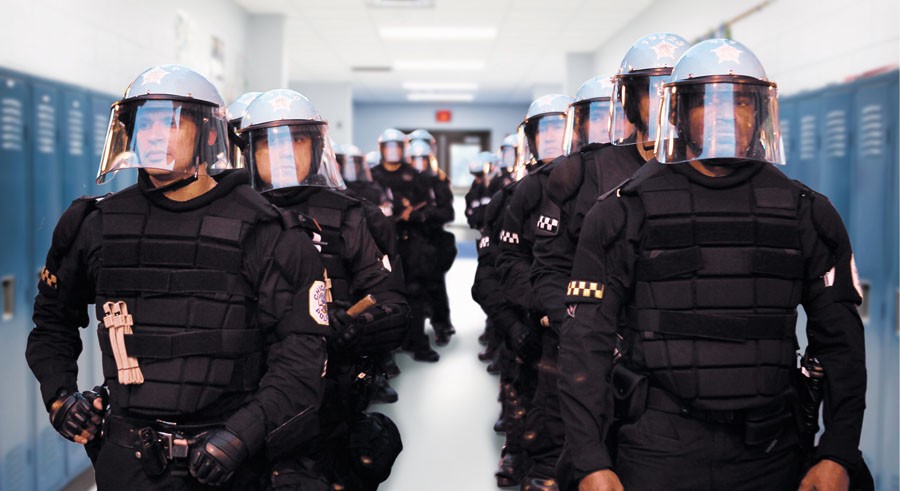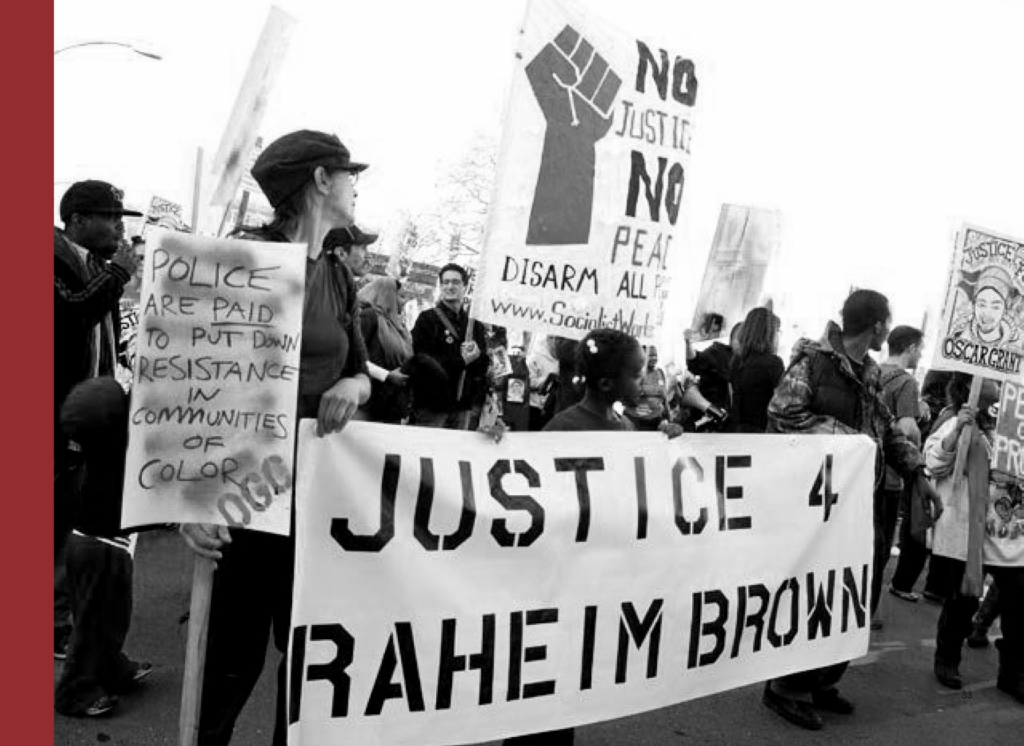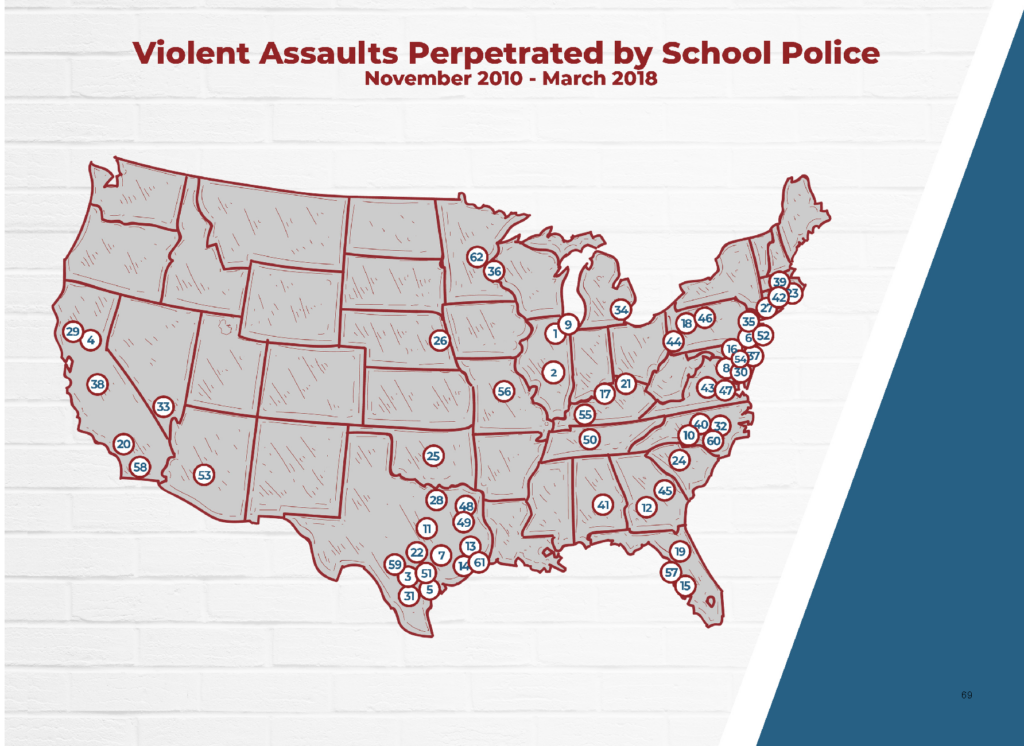6 Things You Need to Know about School Policing
September 23, 2018

September 23, 2018
By: Alexis McKenney
“I felt like Eric Garner because I couldn’t breathe. I felt like I was going to die that day,” is how Brian Burney described a violent encounter with a school police officer while walking to the restroom without a pass. During the exchange, Brian was punched in the face twice, slammed on the ground, and placed in a chokehold by the officer.
As the number of police officers in schools rise, so do the amount of surveillance techniques, student arrests and assaults. Policies authorizing these changes have been heavily championed by those who wrongly believe they prevent mass school shootings (they don’t) and deter crime (wrong again).
We Came to Learn: A Call to Action for Police-Free Schools, our new report co-written with the Alliance for Educational Justice, provides an evidence-based analysis that confirms the true function of school police as way to further criminalize and abuse Black and Brown youth.
Policing in schools is directly connected to the United States’ continuous oppression of Black and Brown people. As a result, students of color have historically been targets of violence from officers in their schools. In 1967 when Philadelphia students protested for Black history courses, they were met with 100 police officers in full riot gear. Months later, 13 student organizers were beaten after 15,000 Chicano students staged a walk-out demanding a curriculum that included their heritage. Students of color have always been agents of change, and school policing is one of the many ways used to deter and dismantle their movements.
There are currently between 14,000 and 20,000 School Resource Officers (SROs) nationwide. This statistic does not include security guards, street cops, and other members of law enforcement responsible for patrolling public schools. The presence of these officers has had violent consequences for many Brown and Black students of all grade levels, and yet, their numbers continue to increase (see Institutionalization of School Police in We Came to Learn to learn more).
It’s clear that safety is found in schools that build positive cultures and infrastructure (such as counselors and extra-curricular activities), but school districts and local governments have prioritized funding police and surveillance tools that make students feel as though they are entering detention centers, not schools. In 2016 alone, Chicago spent $50 million on school security guards and over $2 million in misconduct settlements involving SROs. We Came to Learn only affirms what marginalized communities have been saying for years. School districts need to divest from systems that police students and instead, provide safe, high-quality schools for all students.
Michelle Ruiz, 18, of Puente Arizona speaks to the true nature of school safety from the student perspective:
“Safety is walking into my school campus and not being watched by a police officer, waiting for me to make a mistake. Safety means having better counselors, having better support to advance my education. Safety means being welcomed and trusted. Safety means having input to decide what our schools can look like and feel like.” (Learn more about Puente’s work here).
Do you know of a student who feels like this? There are several more stories like this in We Came to Learn.

We Came to Learn also highlights how teachers and administrators contribute to the culture of over-policing Black and Brown students by continuing to call officers for minor disciplinary infractions. Black youth are five times more likely to be arrested in school than their White peers which is a reality that results in instances such as South Carolina high school students, Niya and Shakara being arrested after Niya recorded a school police officer flipping Shakara over a desk and dragging her out of the classroom after she refused to give her phone to a teacher.
Not only are these violent interactions happening more frequently, but school police see the increase in student arrests as a positive result which points to a complete disregard for the students they police.

After the assault and arrest of Shakara went viral, the Alliance for Educational Justice (AEJ) and students from across the country mobilized to create the #AssaultAt movement which developed rapid response protocols, research, and political education to empower students and their communities to fight back against abusive policing practices in schools. Their work continues and provides an example of how students can hold their schools and local governments accountable to ensure safe school environments.

Get tapped into Alliance for Educational Justice and Advancement Project’s School Policing work here & here.
Alexis McKenney is a Communications Associate at Advancement Project and community organizer based in Washington, DC. Connect with her about social justice and socialism on Twitter.